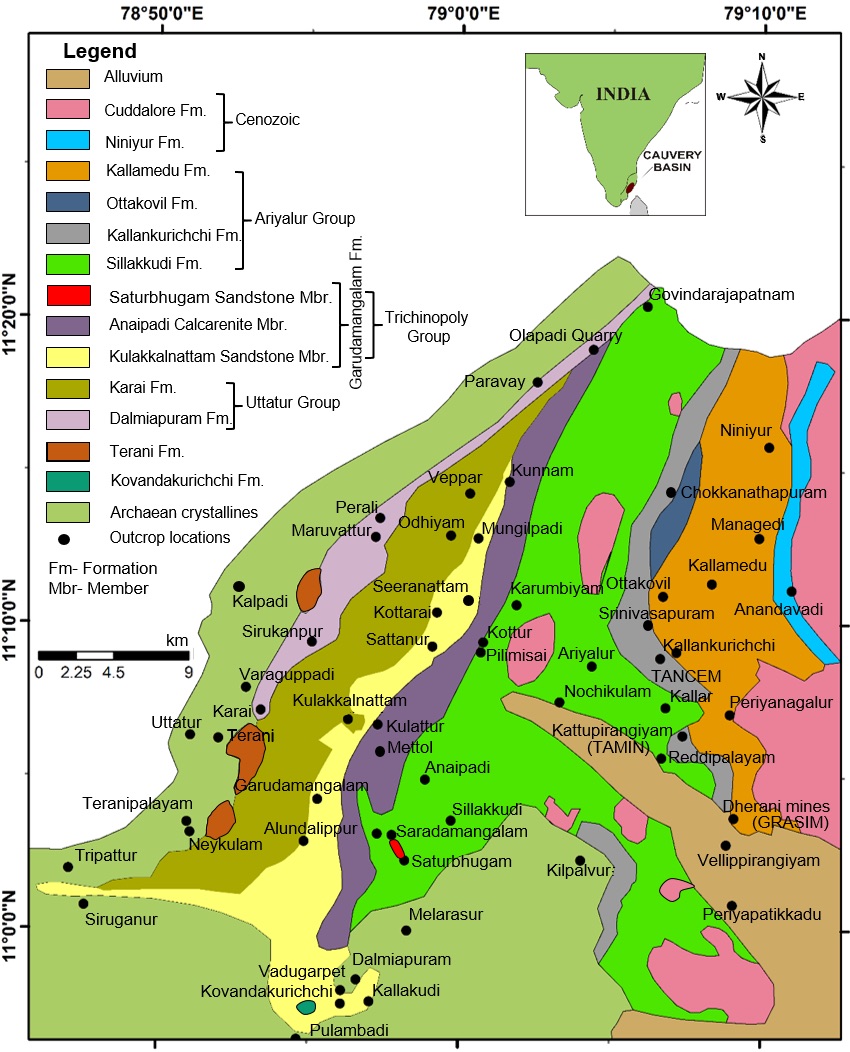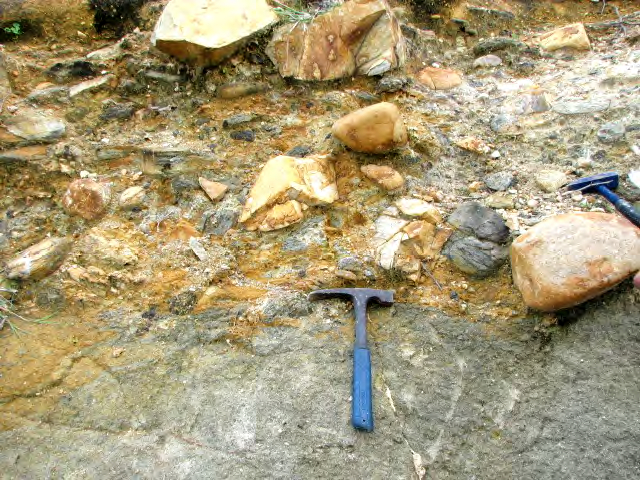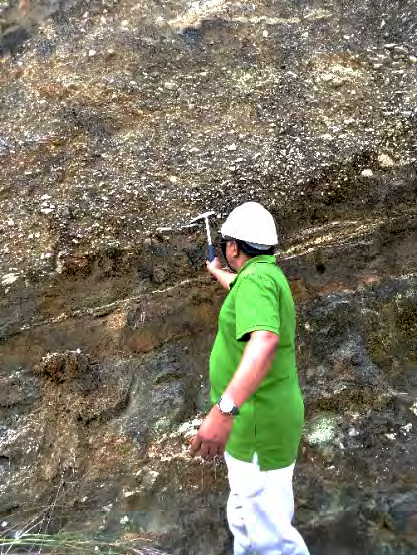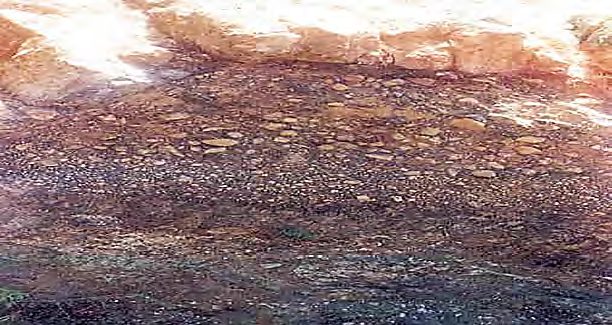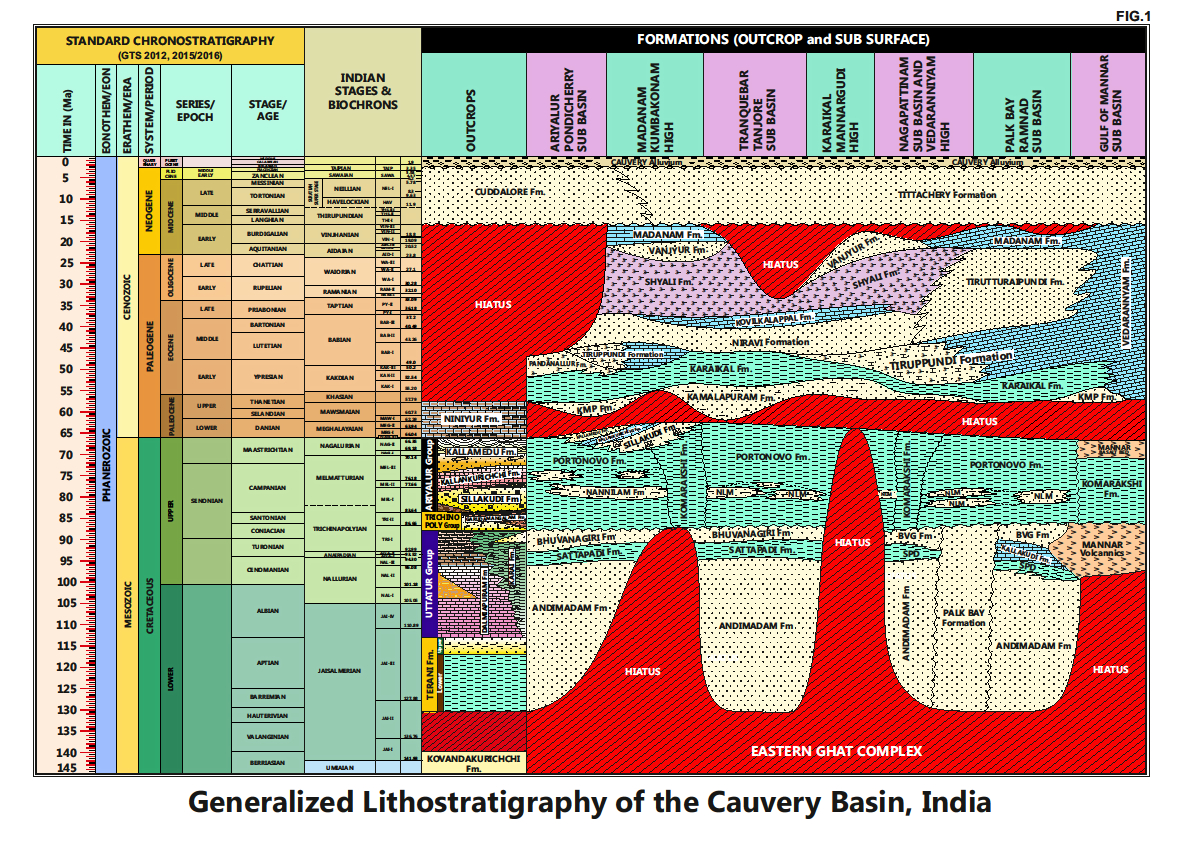Kovandankurichchi Fm
Type Locality and Naming
ARIYALUR-TRICHIRAPPALLI OUTCROP: Named after Kovandankurichchi Village, Ariyalur district, TamilNadu; No. II quarry of Dalmia Limestone mines. Reference section occurs at the eastern margin of KVC mine pit, Dalmia Cements, north of Dalmiapuram, TamilNadu. Nagendra et al., (2018) studied that the informally labeled Kovandankurichchi Conglomerate member of Tewari et al. (1996), and herein raised to formation status and renamed the Kovandankurichchi Formation following the guidelines of the International Stratigraphic Guide (Murphy and Salvador 1999). This formation is best exposed at its type section in the Kovandankurichchi Quarry II where it overlies basement rocks (Sundaram and Rao 1986); and is exposed in a canal adjacent to the mine section.
[Figure 1: Geologic map of Ariyalur area]
Lithology and Thickness
Conglomerate. The Kovandankurichchi Formation is the oldest (Berriasian (?)) sedimentary unit of the Cretaceous system in and around Ariyalur where it reaches a thickness of 175 m (Sundaram et al. 2001) and has a mappable extent. The Kovandankurichchi is a conglomerate with inversely graded fanglomerate features. The clasts are comprised of buff colored feldspar, sub-angular to sub-rounded quartz, boulders, cobbles and pebbles derived from Archean Gneiss (Govindan et al. 1998). Basal Conglomerate is Basement-derived boulder and cobble conglomerate. Upper part is medium- to coarse-grained sandstone, calcareous in upper horizons and interlayered shale beds sequence.
[Figures 2 and 3: Field photos: KVC II mine, Dalmiapuram: two photos of Crystalline basement overlain by Basal conglomerate (provided by A. Nallapa Reddy and R. Nagendra)]
[Figure 4: Inverse-graded bed in conglomerate (provided by A. Nallapa Reddy and R. Nagendra)]
[Figure 5: Generalized Stratigraphy of Cauvery Basin (Provided by A. Nallapa Reddy & R. Nagendra)]
Relationships and Distribution
Lower contact
Crystalline basement rocks. The base of the formation is faulted against basement. The contact between the Archean basement and Berriasian (?); Kovandankurichchi Formation forms sequence boundary-1 (SB1).
Upper contact
Its upper contact is unconformable with the Terani Fm. But may also be transgressively overlain by the marine Dalmiapuram Fm. The upper contact with the Barremian Terani Fm forms a sequence boundary-2 (SB2).
Regional extent
Sporadically outcrops along the western margin of the basin. Typically exposed at Dalmia mines and Olaipadi quarry.
GeoJSON
Fossils
Non-marine Conglomerate. Devoid of fossils
Age
Depositional setting
Alluvial. The boulder and cobble beds which dominate the type sequence and clearly proximal deposits considered to be derived from local phase of basinal subsidence. They are interpreted as fanglomerate deposits which accumulated in a rapidly subsiding fault basin. The lithological properties are indicative of fluvial facies (Sundaram et al., 2001). Archana Tewari et.al (1996) assigned two Members for Kovandankurichchi Conglomerate and siltstone. They interpreted as sheet flow deposits in a retrogradational alluvial fan or density underflows down the face of a submarine delta.
Additional Information
The oldest sedimentary unit overlying the granitic basement is the Kovandankurichchi Formation with fanglomerate facies (Govindan et.al. 1998). This unit is overlain by the Barremian (?) sediments; (Terani Fm) of fluvial to littoral origins (Banerji 1982). The contact between the Archean basement and Berriasian (?); Kovandankurichchi Formation forms sequence boundary-1 (SB1) and the upper contact with the Barremian Terani Fm forms sequence boundary-2 (SB2).
